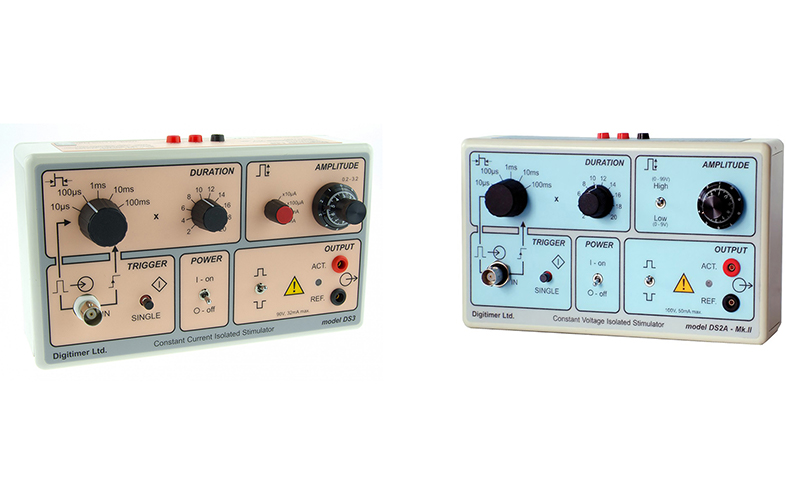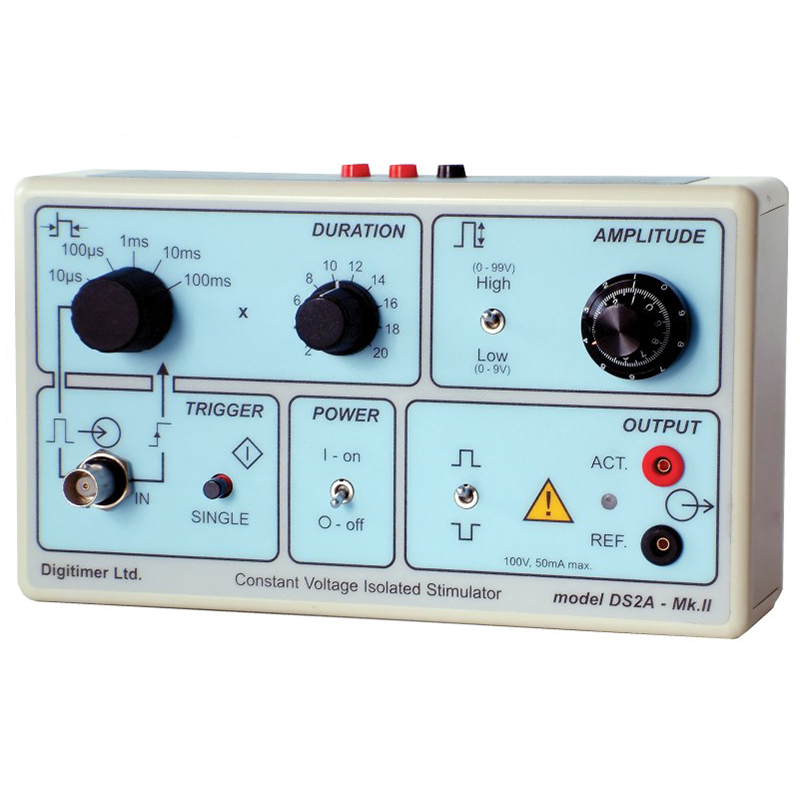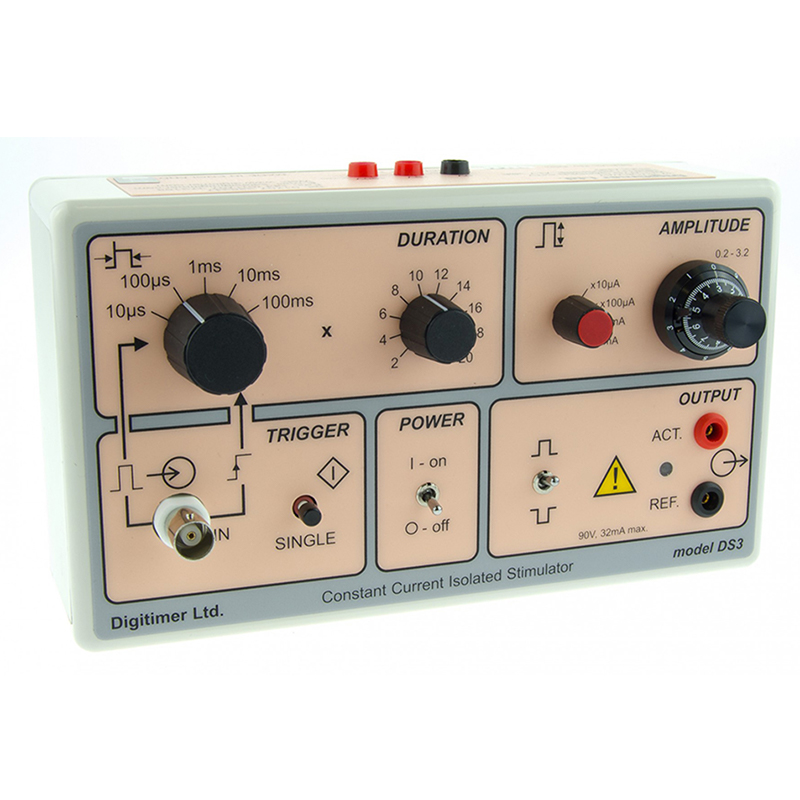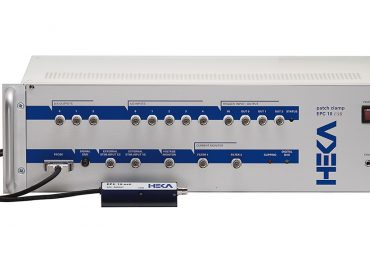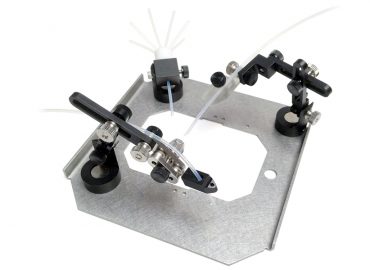Product Focus
DS2A & DS3 Stimulus Isolators
Our DS2A and DS3 isolated stimulators are designed for stimulation in in vitro or small animal applications. In this blog post, we introduce you to the two similar units and shed some light on the important differences between them. The choice between constant current and constant voltage isolated stimulators is also considered. Extremely popular in research laboratories worldwide, our DS2A and DS3 isolated stimulators provide you with compact, reliable and easy to use sources of constant voltage (DS2A, 0-99V) or constant current (DS3, 0-32mA) stimulation.
They feature optical isolation between the battery power source and the trigger circuitry making them ideal for use in very low noise electrophysiological recording environments. Both can be triggered by a front panel button push or by an incoming TTL compatible trigger pulse from your data acquisition interface or other hardware, such as our DG2A Train/Delay Generator. Stimulus amplitude and pulse duration are precisely controlled using front panel dials. In addition, pulse duration can also be determined by the length of the incoming trigger pulse when the duration dial is set to the “Gated” position or by the length of time the single shot push button is held down.
The DS3 was developed from the DS2A in response to many requests for the DS2A to be modified to provide a constant current output. We found that this modification became so popular that it made sense to design a dedicated constant current equivalent of the DS2A. Although similar in appearance, the DS3 contains totally new circuitry, and includes an output clamp circuit which allows the stimulating electrode to be discharged between stimuli, a feature which is invaluable when stimulating with bursts of pulses.
Here are some Frequently Asked Questions which may help with product selection:-
How do I decide between the constant current DS3 and constant voltage DS2A?
The visible difference between the two units (apart from the colour!) is that the output of the DS2A is defined in Volts while the output of the DS3 is defined in Amps. The actual stimulus passing through your preparation is measured in Amps in both cases and is dependent upon Ohms Law (V = IR). If your preparation has a variable impedance (R) and you are using a constant voltage (V) source such as the DS2A, then the actual current (I) passing through the tissue may vary considerably between each stimulus, which may not be a good idea if you want to apply reproducible stimuli. With the DS3, the constant current circuitry prevents variations in tissue/electrode impedance from altering the size of current applied (within the 90V compliance limit of the unit), leading to the stimulator equivalent of WYSIWYG – “What You Set Is What You Get”. Unfortunately there are no well defined rules governing the circumstances under which either stimulator should be used. If you are not sure and feel the need to evaluate either or both please contact us.
Can the DS2A or DS3 be used to stimulate human subjects?
No, neither the DS2A nor the DS3 have medical device directive (MDD) certification, which means that they do not incorporate safety features required for use on human subjects in clinical studies, treatment or for diagnosis. We offer the MDD compliant D185, DS5 and DS7A(H) stimulators for human/patient connection.
What is the purpose & significance of the output clamp circuit on the DS3?
Whenever a high output impedance constant current stimulator is used to deliver a stimulus to a cell, the cell can build up charge between stimuli, forming a capacitative barrier to subsequent stimulation. In turn, the stimulator will attempt to maintain the requested current during a stimulus train by using a higher voltage, however, it will ultimately reach its compliance limit and current will cease to pass to the cell. When activated (by an internal jumper), the DS3 output clamp circuit discharges the electrode tip for 20 microseconds after each stimulus and as a result capacitance is not built up between the stimulating electrode and the cell.
Do you have any publications that cite use of either stimulators?
The DS2A and DS3 are extremely popular in research labs all over the world and because of this there are hundreds of papers which cite their use. We recommend you visit Google Scholar to gain access to these papers.
